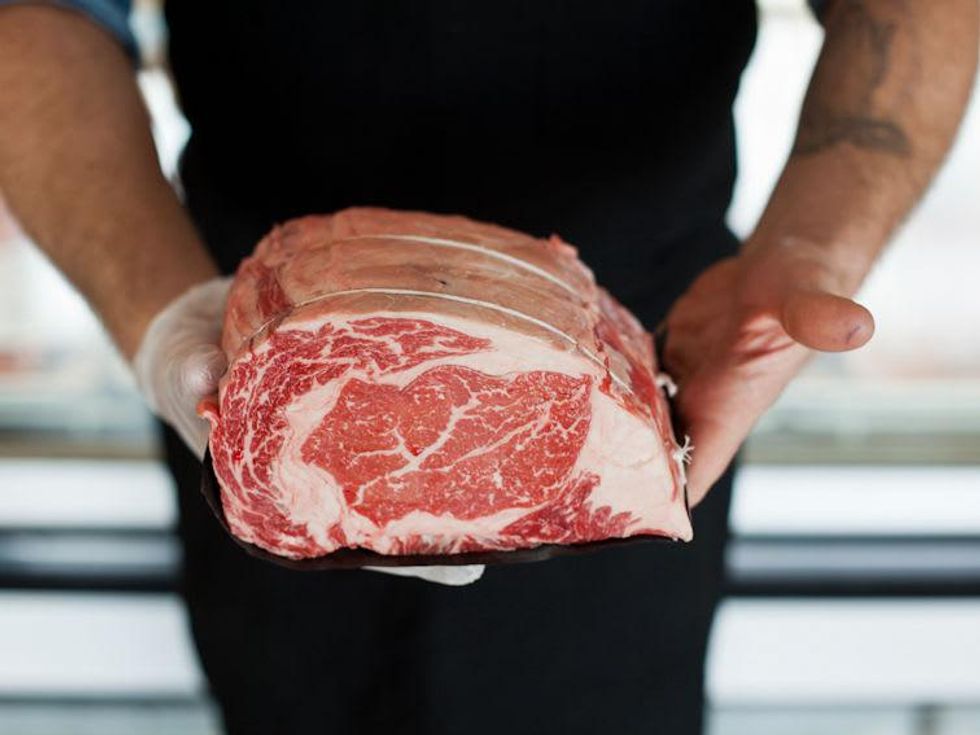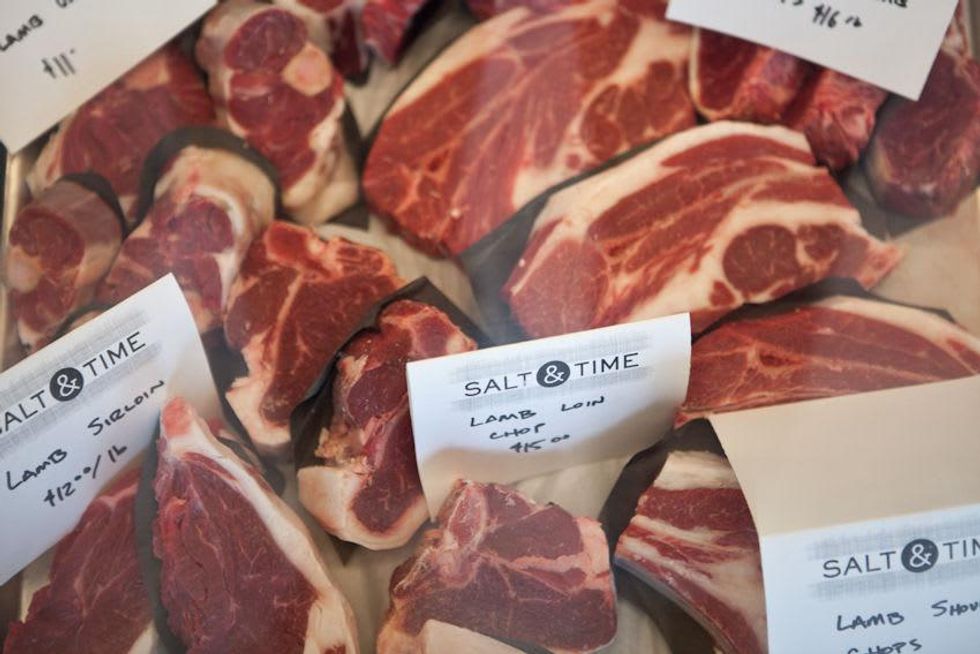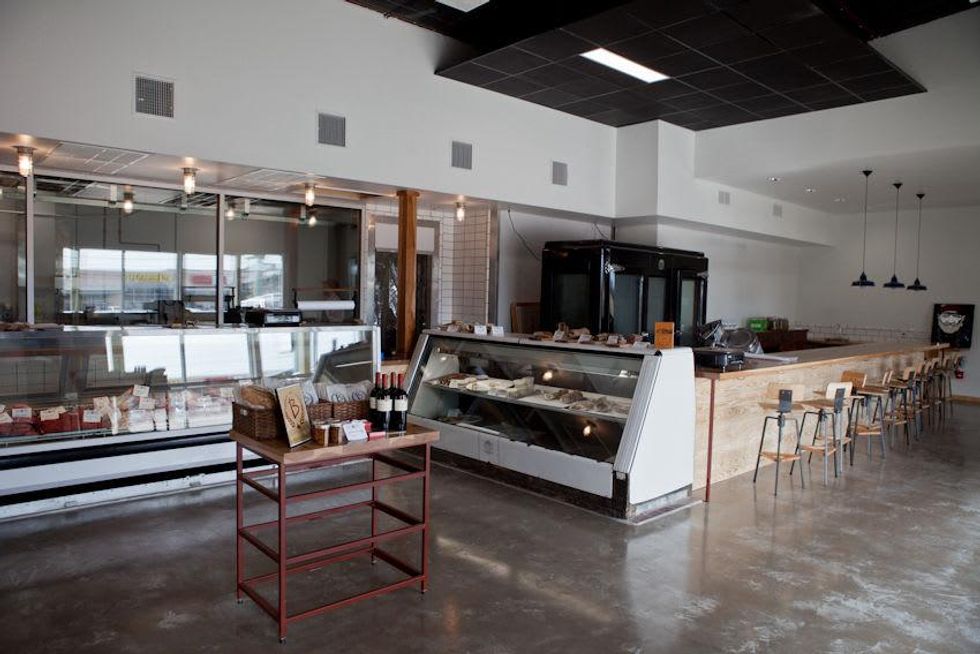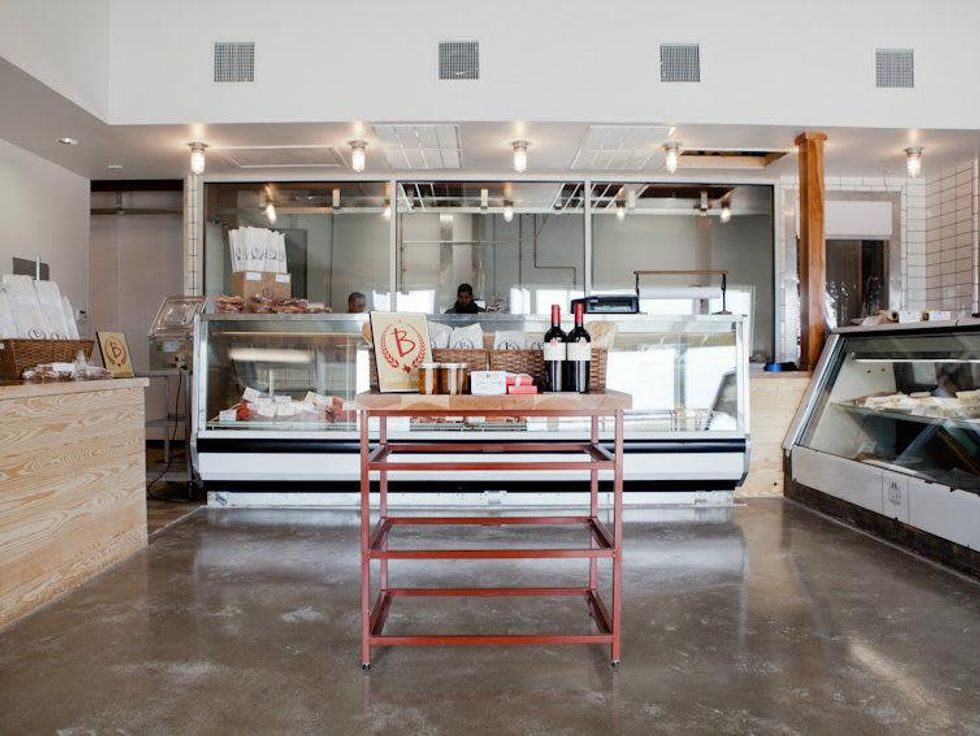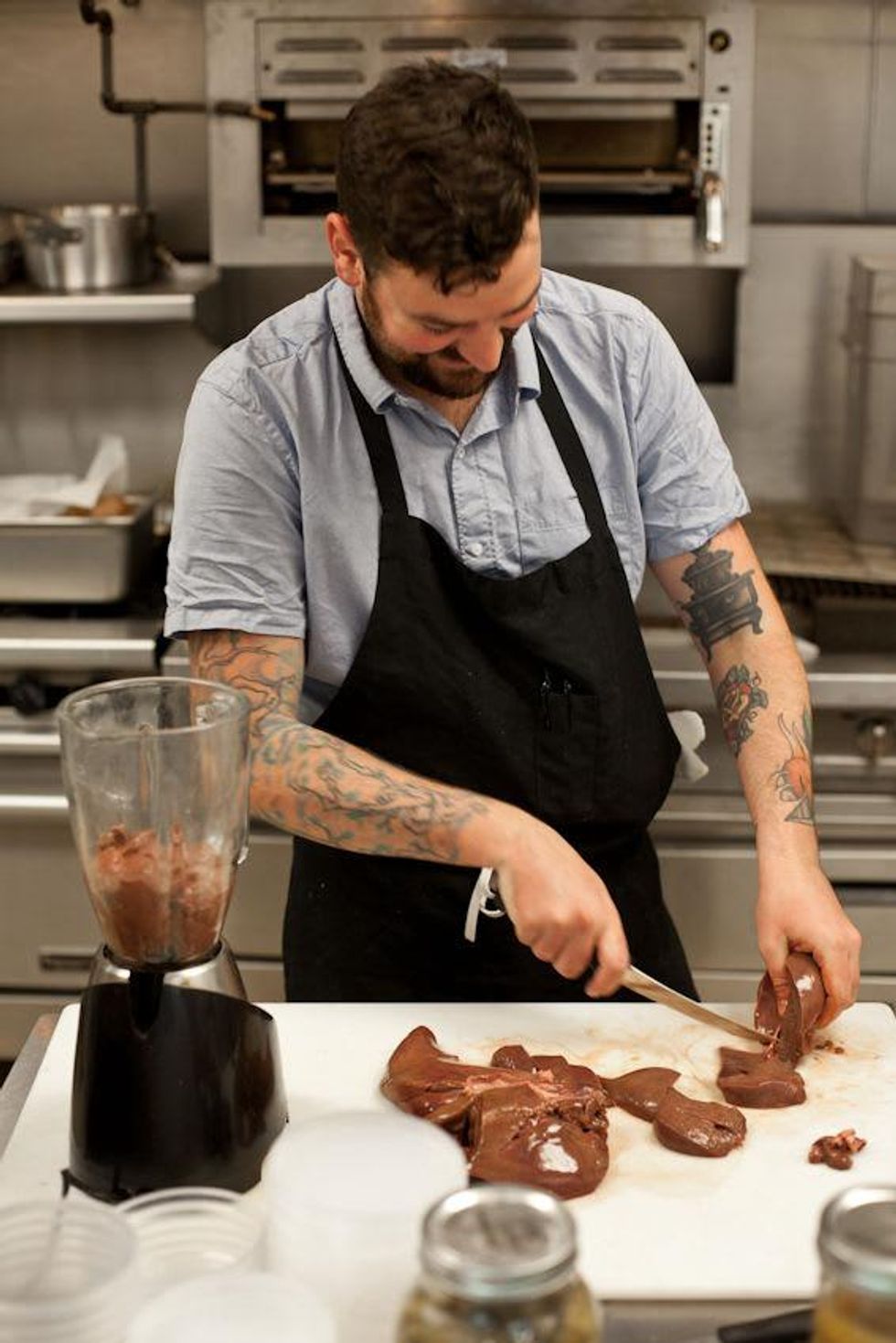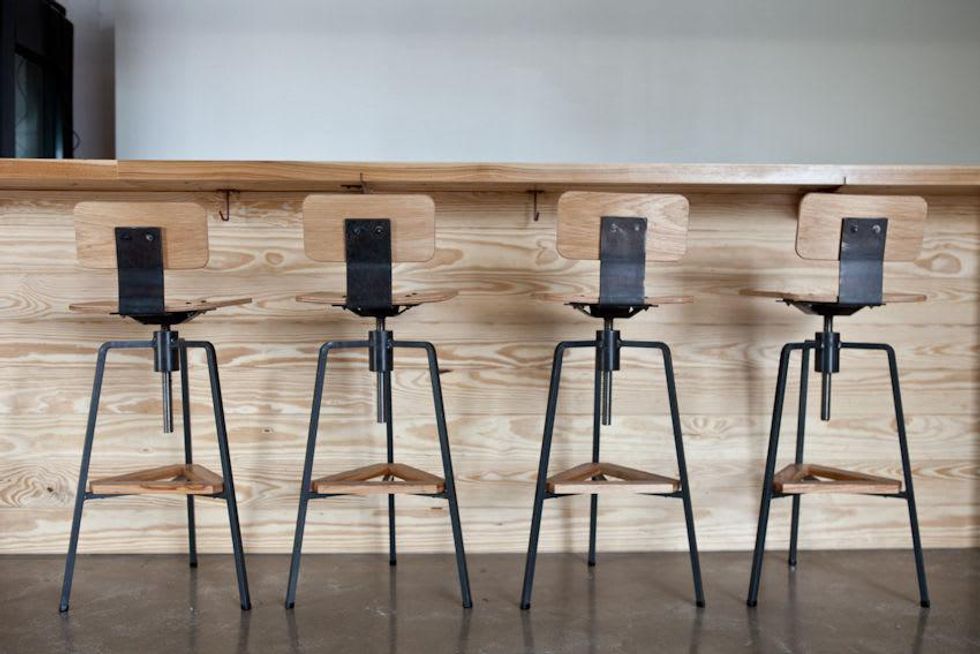A Spoonful of Salt & Time
Salt & Time talks the new brick-and-mortar shop and roots of butchery
For several years, Salt & Time has sold their charcuterie, salami and bacon selections exclusively at farmers markets around town. In early February, the artisanal company finally opened its long-awaited brick-and-mortar butcher shop and salumeria on the East Side.
The new digs have allowed for the company to incorporate an operational butcher shop, a bar area for dining, a grab-and-go menu selection and a number of prepared foods, including Confituras' jams, breads from Baked in Austin and more.
Salt & Time Co-owner Ben Runkle spoke with CultureMap about the move to brick-and-mortar, the shop's incorporation of butchery, the appeal of the East Side and what's to come from the new Salt & Time shop.
CultureMap: What has the move to brick-and-mortar been like? Is it all that you expected?
Ben Runkle: So far it's been great, but there's still a lot that needs to get done to get where we want to be. The last two months while we were finishing the build, we shut down our operations. We normally produce things like bacon and salami a week or a month in advance, but with being shut down, we've had to put all that on the back burner. That's definitely been challenging, but we're finally hitting our stride and offering a great variety of products.
We finally have a fresh meat selection, which is something completely new for us. We're happy where things are at now, especially with the butcher shop. Our number one priority was to get a functional butcher shop up and running so people could come in and get what they need for the week, and I'd say we've accomplished that.
CM: What has changed at Salt & Time? What do you offer in the shop that you didn't offer at the farmers markets?
BR: It's really night and day. The ability to sell fresh-cut meat and not having to freeze and package it is fantastic. We can now order in greater quantities from ranchers and sell more of a variety.
When we were doing batches of bacon, we had to figure out what to do with the rest of the pig and that's not always easy. When you're not selling pork chops, pork roast and that sort of thing, it becomes a challenge. Now we can offer bigger batches and fresh cuts. On top of that, we're also serving lunch.
We want to be a neighborhood place where you can come in, grab the stuff you need for the week, and sit down and enjoy a meal.
CM: Doing a menu is new for you guys, right?
"Everything we've learned about factory farming and processed food has made people want to get more in touch with the roots of what they eat." - Ben Runkle
BR: We would occasionally serve food at the farmers market. We'd grill sausages and did catering events for SXSW, anniversaries, caterings and such. It's never been a regular thing for us though. Our menu right now is a limited menu, with like three or four sandwich options a day. We're not cooking to order just yet. We do a muffaletta sandwich, a special meat sandwich and a special vegetarian sandwich. We're going to add additional small things like soups and salads as time goes on.
CM: Tell me about the move to brick-and-mortar. I saw you guys did a Kickstarter campaign, and it looks like you got a lot of community support.
BR: We spent well over a year talking about a place until we finally nailed down a location. We found the spot we're currently in in November 2011. By the time we negotiated the lease, went through the permits and everything, it was already October of 2012. We didn't anticipate it taking as long as it did, but we made a decision early on that we were going to do this the right way and put the right amount of care and effort into the project.
We want this place to be something we grow with through the years. The Kickstarter campaign was something we did at the tail end of it. We used that money to make the building look like an Austin neighborhood place you'd go to on a daily basis.
CM: Tell me about the location. Why did you choose the East Side over something like South Lamar or South First?
BR: I desperately looked for a space on South First [Street] since I live so close to there, and we also checked out a space on Airport Boulevard and North Loop close to Kome and House Pizzeria. We looked all over, but we started Salt & Time at the Hope Farmers Market, so we've always felt a connection to the East Side. We didn't start out with that in our minds though.
The building we chose just felt right to us. It was a mess when we came into it, but we automatically felt right at home. We put a lot of work into it to make it ours. My wife, Natalie Davis, has been the design force behind the space. She has her own product line called Canoe and she teaches graphic design, so she has a great eye for design.
We worked with a local architect and a found really great furniture designer that goes by the name of Petrified Design. We worked with people we know and trust.
CM: How does the collaboration process between you and your business partner and butcher, Bryan Butler, work?
BR: It works because we're business partners first, and I don't say that out of any animosity or lack of friendship. When we met, I was still building Salt & Time. Bryan had been a butcher for 15 years and was at Wheatsville Co-op. He was looking to own his own shop, but when we met it was pretty immediately clear that we had complementary strengths.
I always envisioned Salt & Time having a butcher shop, but I'm by no means a butcher. I make sausage, salami and charcuterie, which is a totally different art from butchery. We talked about our mutual ideas and goals when we met, and when he came on, things just seemed much more complete.
CM: Butchery has taken hold across the nation. Why do you think that is?
BR: It's a much bigger wave than just the butchery component. People are beginning to want to know more about everything they eat: beer, cheese, wine, breads – all of it. We've turned a corner from shopping at traditional grocery stores. The tipping point has been reached, and people want to seek out things that are more unique, made in smaller batches, and are more hands-on.
It's not just food; it's everything. Everything we've learned about factory farming and processed food has made people want to get more in touch with the roots of what they eat. It's driving people to care about how their food is made, and I definitely think that's a positive change.
CM: What's to come from you guys in the next six months to a year?
BR: I have to emphasize that we aren't a restaurant — we are a butcher shop. That's our number one priority, but that said, we do want to expand our menu a bit and have things like happy hour events.
Our goal is to be a place where people stop by to grab a kolache for work, a sandwich for lunch and pick up the steak they need at night for dinner. I know that won't happen with everyone, but we really want it to mean something to the city of Austin.
